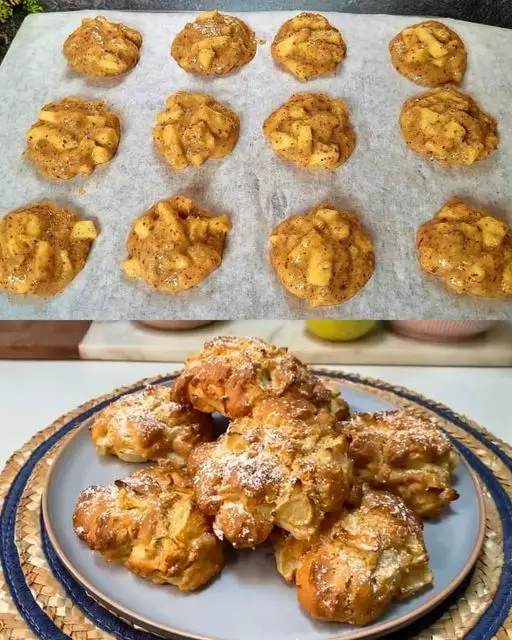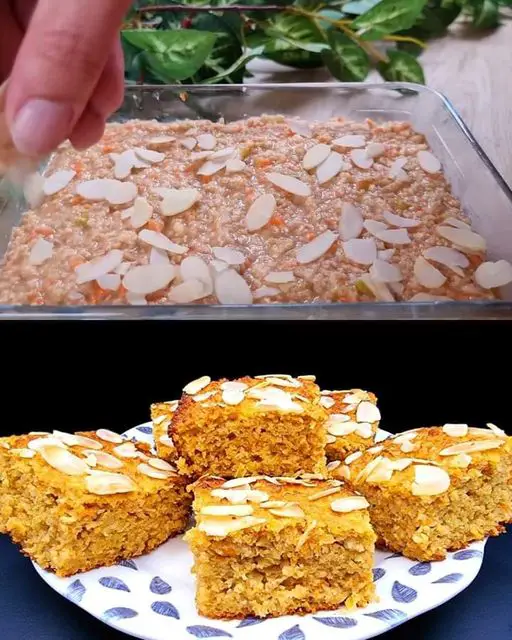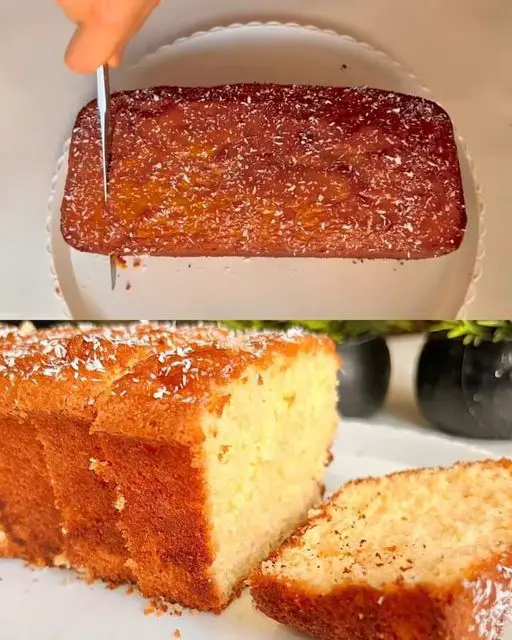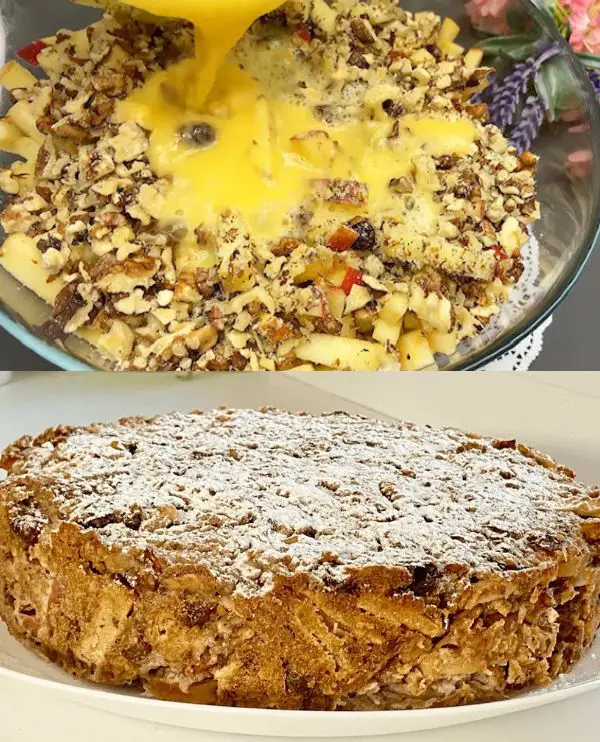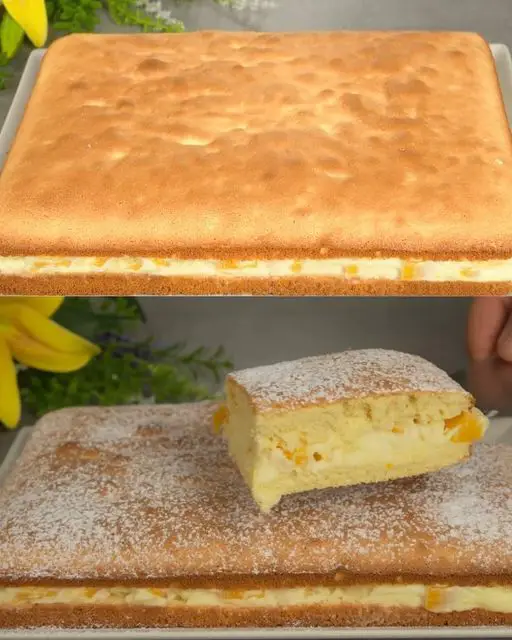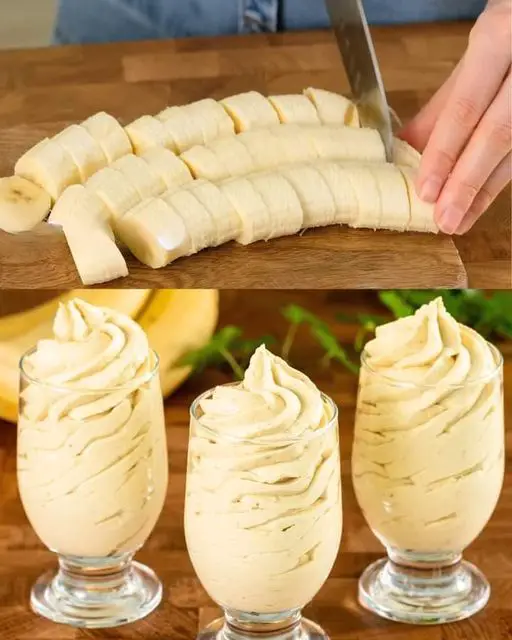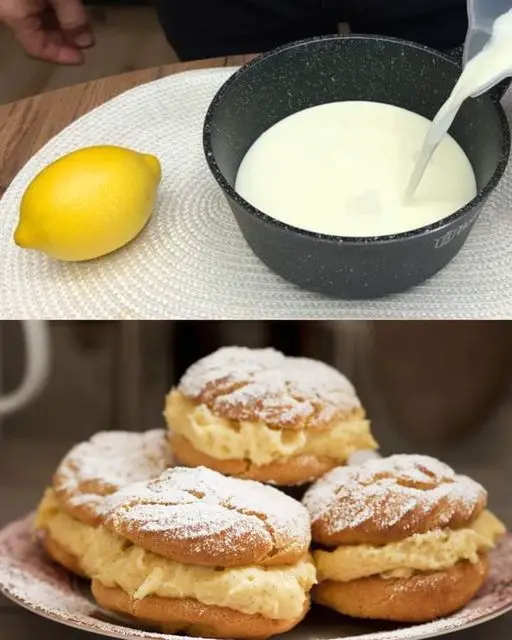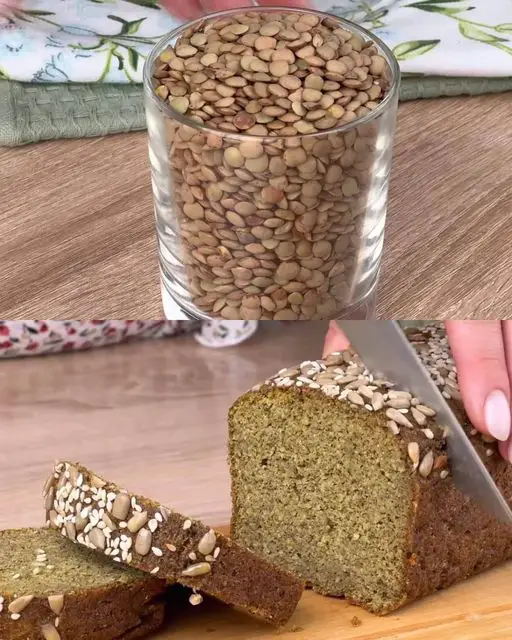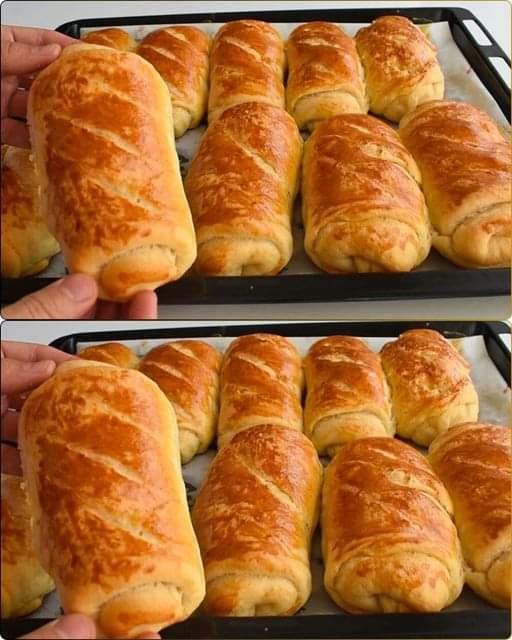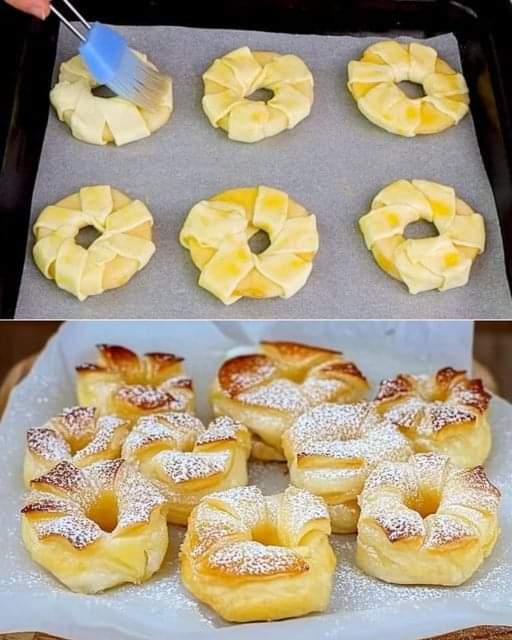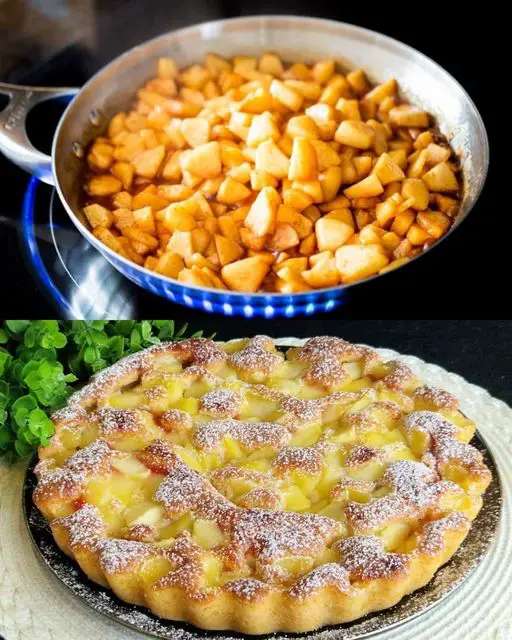Soft Apple Cookies
Table of Contents
Ingredients:
-
- Apples: 2 medium, peeled and finely chopped (about 1 1/2 cups or 250 g)
-
- All-Purpose Flour: 1 1/2 cups (190 g)
- Baking Powder: 1 teaspoon
- Ground Cinnamon: 1/2 teaspoon
-
- Salt: 1/4 teaspoon
- Granulated Sugar: 1/2 cup (100 g)
- Brown Sugar: 1/2 cup (100 g)
-
- Butter: 1/4 cup (55 g), softened
- Egg: 1 large
- Vanilla Extract: 1 teaspoon
- Optional Add-ins: 1/2 cup (50 g) raisins or chopped nuts
Directions:
-
- Preheat Oven: Preheat your oven to 350°F (175°C). Line a baking sheet with parchment paper or a silicone baking mat.
- Prepare Apples: Peel and finely chop the apples. Set aside.
-
- Mix Dry Ingredients: In a medium bowl, whisk together the flour, baking powder, ground cinnamon, and salt.
- Cream Butter and Sugars: In a large bowl, beat the softened butter, granulated sugar, and brown sugar until light and fluffy. Add the egg and vanilla extract, mixing well.
- Combine Ingredients: Gradually add the dry ingredients to the wet ingredients, mixing until just combined. Fold in the chopped apples and optional add-ins.
-
- Scoop Cookies: Drop rounded tablespoons of dough onto the prepared baking sheet, spacing them about 2 inches apart.
- Bake: Bake in the preheated oven for 12-15 minutes, or until the edges are lightly golden and the cookies are set.
- Cool: Allow the cookies to cool on the baking sheet for a few minutes before transferring them to a wire rack to cool completely.
Serving Suggestions:
- Enjoy the cookies warm with a cup of tea or coffee.
- Serve with a light drizzle of caramel sauce for an extra treat.
Cooking Tips:
-
- Apple Preparation: Make sure the apples are finely chopped to ensure even distribution and texture in the cookies.
- Butter Consistency: Softened butter is key for a smooth dough. If it’s too cold, it will be difficult to cream with the sugars.
Nutritional Benefits:
-
- Apples: Provide fiber, vitamins, and antioxidants.
- Cinnamon: Offers anti-inflammatory properties and can help regulate blood sugar levels.
Dietary Information:
-
- Contains Dairy: From butter.
- Contains Gluten: From flour.
- Can Be Made Dairy-Free: Use a dairy-free butter substitute.
Nutritional Facts (per cookie):
-
- Calories: 110 kcal
- Carbohydrates: 16 g
- Protein: 1 g
-
- Fat: 5 g
- Fiber: 1 g
- Sugar: 9 g
Storage:
- Room Temperature: Store in an airtight container at room temperature for up to 5 days.
- Freezing: Freeze cookies in a single layer on a baking sheet. Once frozen, transfer to a freezer bag or container. They can be stored for up to 3 months. Thaw at room temperature before serving.
Why You’ll Love This Recipe:
-
- Soft and Tender: These cookies have a delightful soft texture that melts in your mouth.
-
- Apple Flavor: Packed with the natural sweetness and flavor of apples.
- Spice Infusion: Cinnamon adds a warm, comforting spice to each bite.
- Easy to Make: Quick preparation and baking process makes these a great option for a fast treat.
